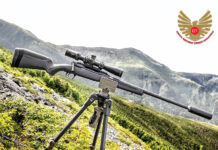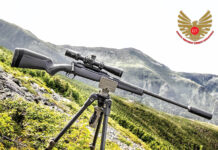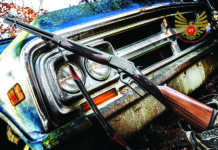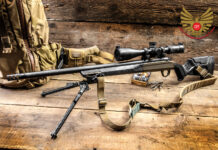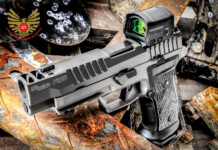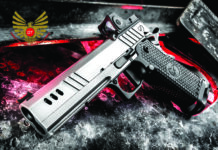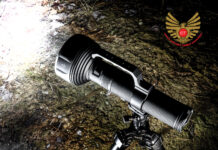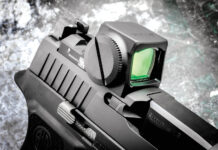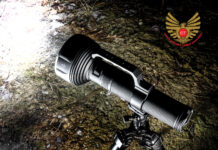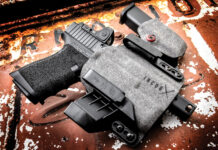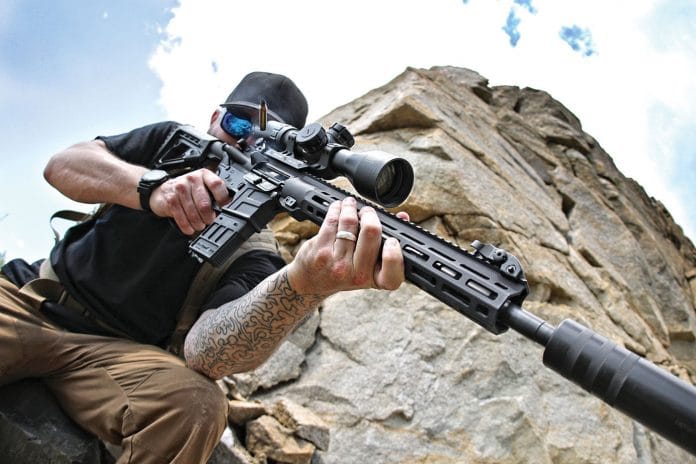by Frank Melloni
Any Situation. Any Distance
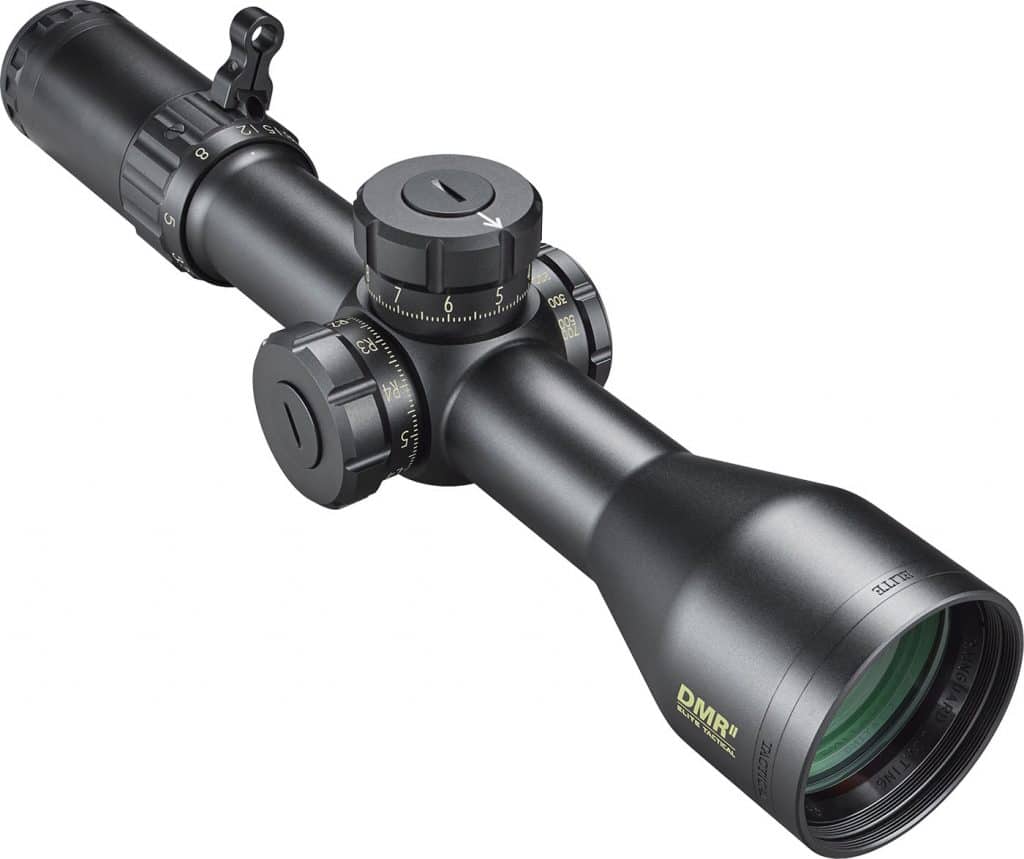
With multi-caliber AR-15s taking off, the idea of using the same firearm to engage a target at 10 yards and 1,000 starts to become a reality as long as the optic is up to the task. The shooting world has always regarded a scope with a magnification range of 3x-9x as the “all around” optic. But is it really?
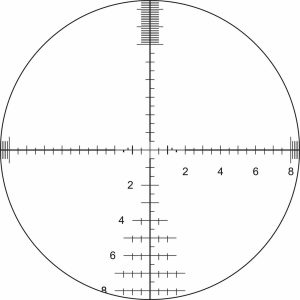
These scopes usually house a 40mm (or smaller) objective lens and don’t provide enough field of view to quickly acquire targets inside of 25 yards. On the other hand, 9x really doesn’t give adequate magnification for precision shots past 500. These scopes are also usually built on a 1” tube, further limiting their capability through a lack of elevation adjustment.
Bushnell had this in mind when they developed their elite DMR scope and its newest version the DMR II (www.Bushnell.com; $1,998.67). This optic was built to accommodate a relatively new type of soldier—the “designated marksman”. The designated marksman, or DM, is the soldier in the unit who has the most shooting talent and therefore is issued a rifle that can engage targets out to 800 yards, but still fight alongside their buddies up close and personal.
The DMR II starts life on a one piece 34mm tube. This tube size provides generous adjustment for elevation and windage, thus giving you more long-range capability without having to sacrifice a short-range zero. At just over 13 inches long, the 3.5x-21x 50mm DMR II makes it very short for class. Not only is it short, but it’s light as well, adding only adds 34 ounces to your rifle system. This compact design helps immensely with balance, keeping offhand shots very manageable.
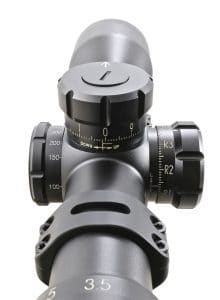
The reticle of this optic is in the first focal plane. This keeps your subtentions the same distance from each other throughout the entire magnification scale. This means you will be able to use them to estimate range or lead at any power setting. For this you have two reticle options; the clean G3/G3-I or the detailed Horus H59. Both reticles have subtentions that allow you to estimate a lead on a moving target as well as the standard mil scale to estimate target size or distance.
We mounted our multi-use scope in a Warne 1-piece X-Skel mount (www.warnescopemounts.com; $178.49) and hit the range. On the range we used a Frontier Tactical Warlock rifle. It just makes sense to use a multipurpose optic on a multi-caliber platform. The Warlock adapter allows shooters to change barrels in the field without any tools, subsequently changing cartridges to suit their needs. We brought out their 16-inch barrel in 7.62×39 for our CQB work and their 20-inch 6.5 Grendel barrel for our long range work . . . out to 800 yards. This setup is available at www.frontiertactical.com ($1,189).
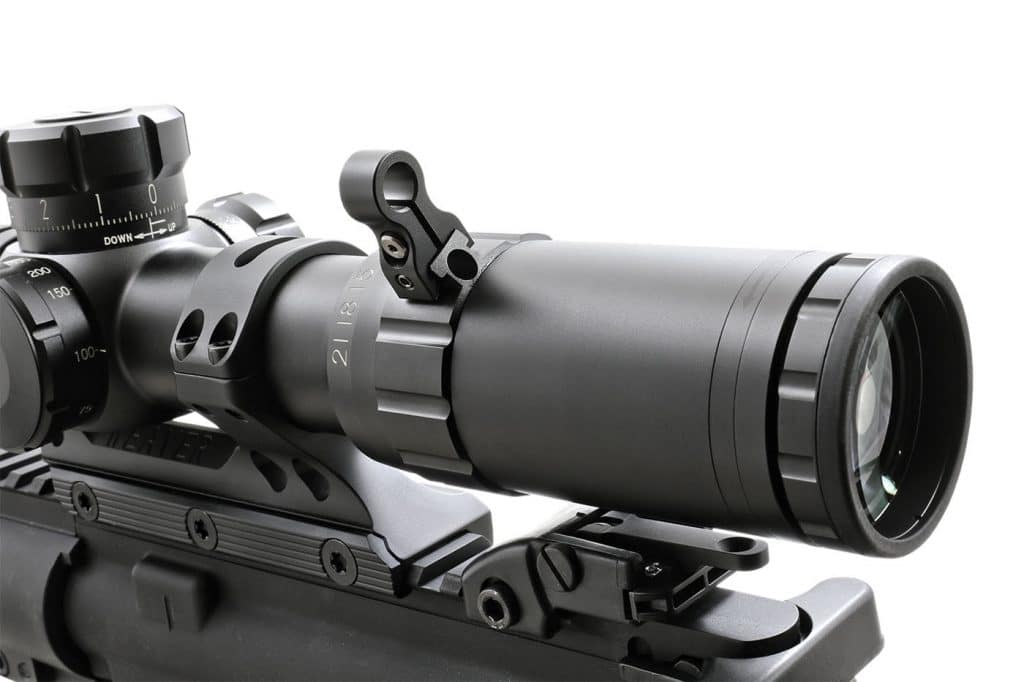
Our first objective was to check tracking and repeatability. Tracking is the ability of an optic to give you the correct elevation change for the clicks that you dialed in. At 50 yards 1 mil of adjustment should bring you up 1.8”, 2 mils 3.6” etc. We zeroed our rifle using Federal’s new 120-gr. OTM rounds ($26.49) and fired a group at the same target after coming up +1 mil of elevation, +10 mils of elevation and +14 mils of elevation. While the scope still had several mils of come-up, we simply did not have enough paper!

